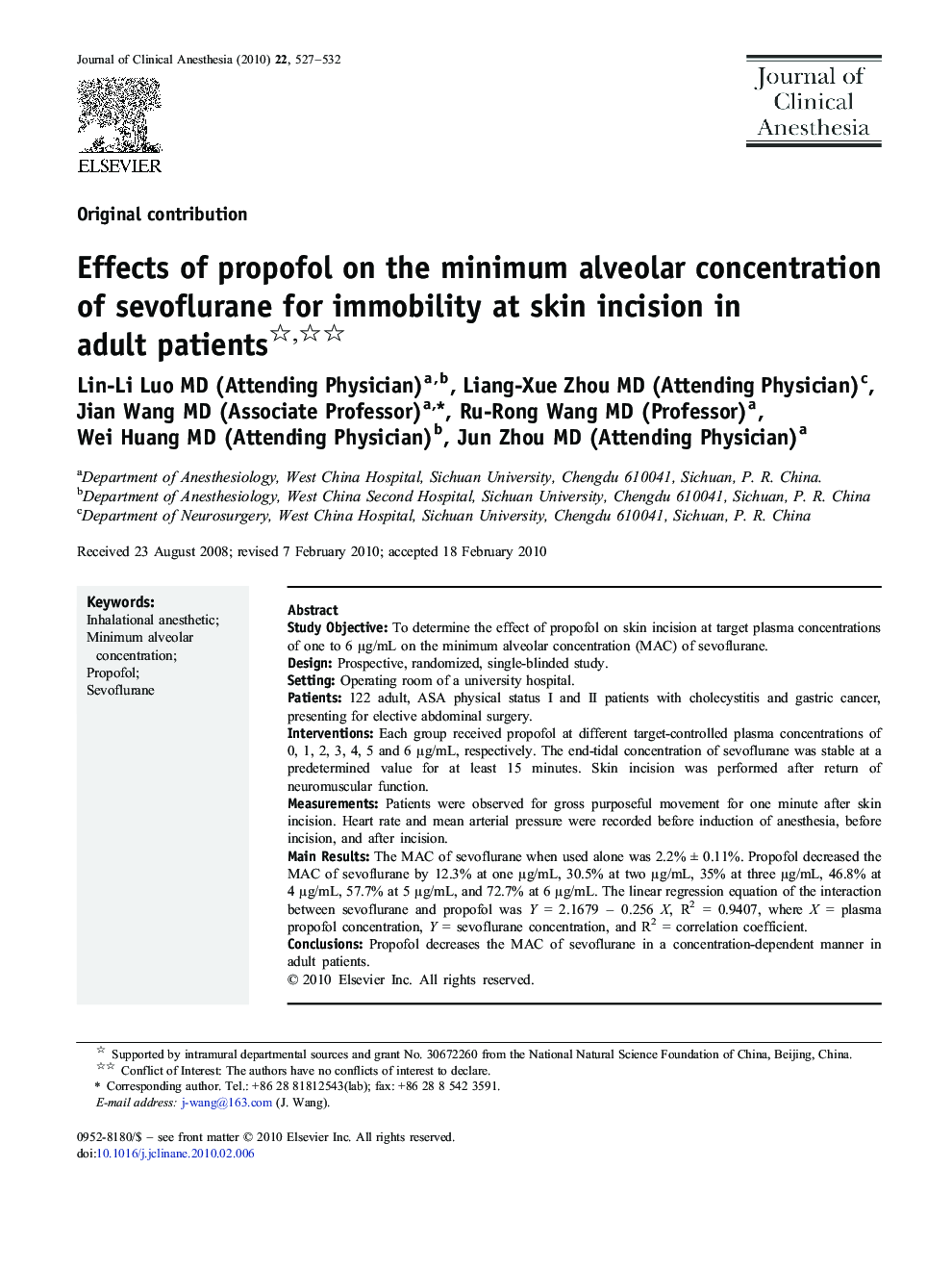| Article ID | Journal | Published Year | Pages | File Type |
|---|---|---|---|---|
| 2762939 | Journal of Clinical Anesthesia | 2010 | 6 Pages |
Study ObjectiveTo determine the effect of propofol on skin incision at target plasma concentrations of one to 6 μg/mL on the minimum alveolar concentration (MAC) of sevoflurane.DesignProspective, randomized, single-blinded study.SettingOperating room of a university hospital.Patients122 adult, ASA physical status I and II patients with cholecystitis and gastric cancer, presenting for elective abdominal surgery.InterventionsEach group received propofol at different target-controlled plasma concentrations of 0, 1, 2, 3, 4, 5 and 6 μg/mL, respectively. The end-tidal concentration of sevoflurane was stable at a predetermined value for at least 15 minutes. Skin incision was performed after return of neuromuscular function.MeasurementsPatients were observed for gross purposeful movement for one minute after skin incision. Heart rate and mean arterial pressure were recorded before induction of anesthesia, before incision, and after incision.Main ResultsThe MAC of sevoflurane when used alone was 2.2% ± 0.11%. Propofol decreased the MAC of sevoflurane by 12.3% at one μg/mL, 30.5% at two μg/mL, 35% at three μg/mL, 46.8% at 4 μg/mL, 57.7% at 5 μg/mL, and 72.7% at 6 μg/mL. The linear regression equation of the interaction between sevoflurane and propofol was Y = 2.1679 – 0.256 X, R2 = 0.9407, where X = plasma propofol concentration, Y = sevoflurane concentration, and R2 = correlation coefficient.ConclusionsPropofol decreases the MAC of sevoflurane in a concentration-dependent manner in adult patients.
